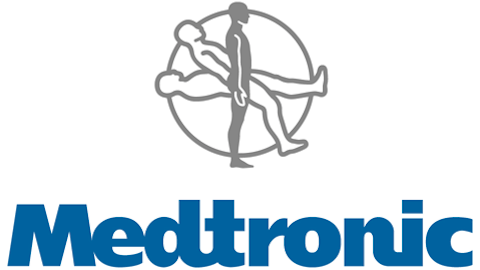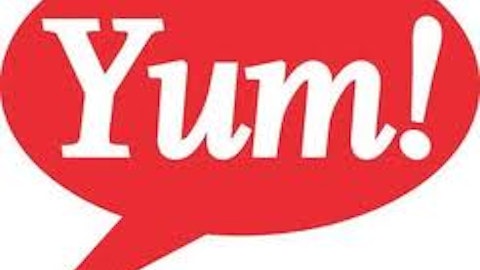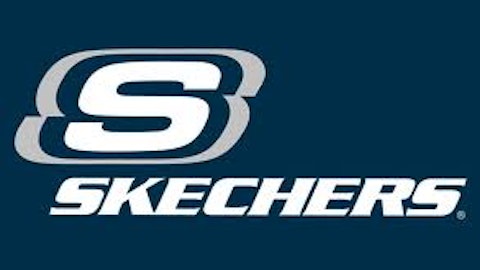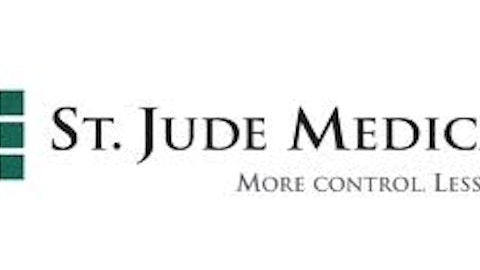What a difference a few months can make. The last time Edwards Lifesciences Corp (NYSE:EW) posted its quarterly results, the stock experienced its biggest drop in more than a decade. This time around, the story is quite different. Edwards announced solid fourth-quarter results after the market closed on Monday. Shares were up less than 1% in after-hours trading. Here is how the company came back from its dismal third quarter.
The numbers
Edwards’ adjusted earnings came in at $0.90 per diluted share, handily beating average analyst estimates of $0.77 per share. These results also blew away the fourth-quarter numbers from 2011, growing more than 45% year-over-year.

Sales for the quarter totaled $510.5 million, up 18.7% compared to the prior year. Were it not for some currency headwinds, sales would have been even higher. Edwards reported that total sales were up more than 21% over 2011 excluding foreign exchange.
For the full year, earnings were $2.48 per diluted share, quite higher than the $1.98 per share reported in 2011. Non-GAAP earnings for the entire year were $2.69 per share, up 32% from the previous year. Full-year sales jumped strongly also versus 2011. Edwards reported 2012 net sales of $1.9 billion, more than 13% higher than the prior year.
Behind the comeback
How did Edwards come back so strongly from the third quarter? The answer lies at least partially in why that quarter disappointed so much. The company’s management pointed to three primary reasons for the poor showing back then.
First, Edwards blamed European austerity measures for fewer procedures being performed. This time around, international sales were stronger than U.S. sales for the Surgical Heart Valve Therapy product group. The company reported that international sales growth for the group during the fourth quarter was 4% compared to 3.5% growth in the U.S. Companywide sales for the U.S., though, were up 45% compared to less than 4% in international markets.
Second, back in October the U.S. had yet to approve reimbursement for inoperable patients without femoral access. That wasn’t a significant issue for the fourth quarter. Additionally, early in the last quarter, the FDA approved use of Edwards’ transcatheter valve in high-risk patients. That move opened up another group of patients, expanding the market for the company’s SAPIEN valves.
Lastly, the third quarter included part of the summer — when medical staff are more likely to be on vacation. That’s important because a full team is required for Edwards’ heart valves to be used in procedures. When key team members are out, fewer procedures are performed. Fewer vacations during the fourth-quarter months helped keep teams fully staffed, which removed a hurdle for scheduling procedures.
Looking ahead
Edwards announced 2013 first quarter adjusted earnings guidance of between $0.74 and $0.78 per share. The average estimate for analysts is $0.77 per share.
The company continues to experience strong growth with its SAPIEN line of transcatheter heart valves. However, challenges lie ahead. For one thing, competition will likely intensify.
A recent study published in the Journal of the American College of Cardiology found no big differences in terms of medical outcomes between Edwards’ SAPIEN and Medtronic, Inc. (NYSE:MDT)‘s CoreValve transcatheter valves. The most significant difference was that permanent pacemakers were needed more often with the Medtronic valve. Edwards, however, is seeking to keep CoreValve from being marketed in the U.S. because of alleged patent infringement.
St. Jude Medical, Inc. (NYSE:STJ) received European approval for its 23 mm Portico transcatheter valve in November and has a trial under way with the 25 mm version. The company plans to initiate a trial in the U.S. this year with the goal of obtaining FDA approval.
Boston Scientific Corporation (NYSE:BSX) also plans to jump into the fray. The company bought Sadra Medical in 2011 and hopes to compete with the Lotus transcatheter valve initially developed by Sadra. Boston Scientific has lots of ground to make up, though, as the fourth entrant into the market.
Foolish take
Overall, I think Edwards will keep demonstrating leadership in its market. The stock has yet to regain the highs attained prior to the company’s third-quarter results. I think shares could see solid gains in 2013.
However, my problem with Edwards is that there are plenty of other stocks that should be able to go up even more. It’s not priced cheaply, either, at 28 times forward earnings. I like Edwards, especially with the solid comeback with its fourth-quarter results. I just like other stocks more.
The article How Edwards Lifesciences Came Back originally appeared on Fool.com and is written by Keith Speights.
Fool contributor Keith Speights has no position in any stocks mentioned. The Motley Fool owns shares of Medtronic.
Copyright © 1995 – 2013 The Motley Fool, LLC. All rights reserved. The Motley Fool has a disclosure policy.




